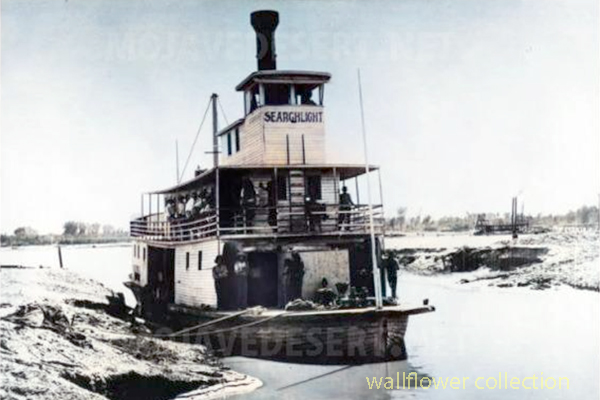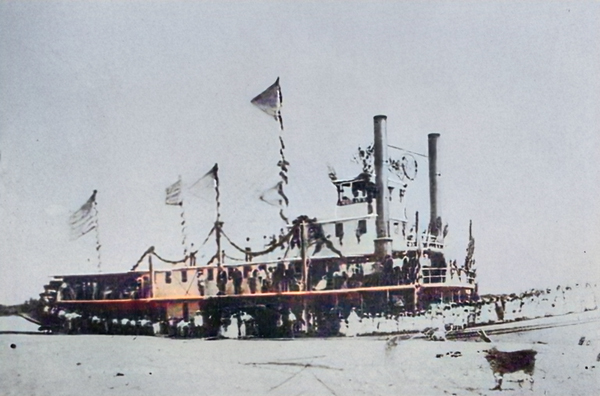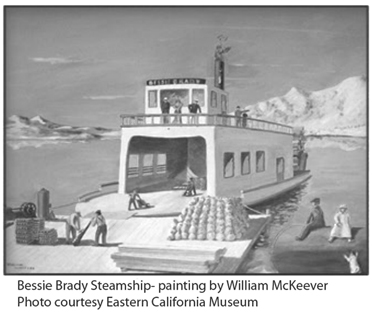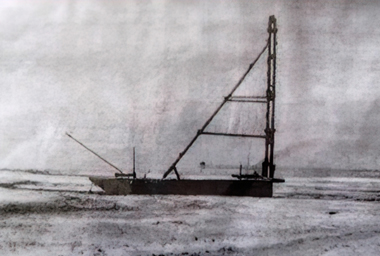Desert Steamers
Colorado River Steamboats

Steamboat Searchlight on the Colorado River
Despite sandbars and rapids, commercial steamboats regularly traveled the river from the 1860s until the late 1800s.
Colorado River steamboats were not fancy like those of the Mississippi River. They were plain and functional. Travelers had to put up with the uncomfortable heat. One passenger commented that "the wooden arms of the chairs seemed like they were slowly igniting."
The railroad's inexpensive freight rates began putting the steamboats out of business. The final blow came in 1909 when the Laguna Dam near Yuma was completed. The last steamboat on the river was the Searchlight which continued to paddle along until 1916.
~ Searchlight Museum

Mohave II - 1876
Mohave II was a stern-wheel steamboat and the only double smokestack steamboat to run on the Colorado River between 1876 & 1900.
Steamboats on the Colorado River played a significant role in the development of the American West during the 19th and early 20th centuries. These steamboats were primarily used for transportation and commerce, navigating the challenging waters of the Colorado River to bring goods, supplies, and people to various settlements and mining communities in the region.
Era of Steamboats
The era of steamboats on the Colorado River began in the mid-1800s, with the first successful navigation up the river to Fort Yuma by the steamboat "The Uncle Sam" in 1852. This marked the beginning of a flourishing period of river commerce, as steamboats became a vital link between the sea and inland settlements.These steamboats would typically travel between the mouth of the Colorado River at the Gulf of California and inland ports such as Yuma, Arizona, and sometimes as far north as Callville, Nevada. They transported a wide variety of cargo, including mining equipment, agricultural products, building materials, and general merchandise. Additionally, they played a crucial role in supporting the military outposts along the river and were instrumental during the gold and silver rushes, providing a lifeline to the booming mining towns.
The navigation of the Colorado River was challenging due to its unpredictable waters, variable depth, and shifting sandbars. Steamboat captains and crews had to be highly skilled to navigate these hazards successfully. The steamboats used on the Colorado were specially designed to handle these conditions, often featuring shallow drafts to deal with the river's shallow stretches and powerful engines to combat its strong currents.
However, the era of steamboats on the Colorado River began to decline in the late 19th and early 20th centuries, primarily due to the construction of railroads, which offered faster and more reliable transportation. The building of dams and other river control structures also transformed the river's navigability, leading to the eventual end of commercial steamboat operations.
Despite their decline, the legacy of steamboats on the Colorado River remains an important part of the history of the American West, symbolizing a period of exploration, innovation, and economic development.
Steamers of Owens Lake

 Molly Stevens
Molly Stevens